Catch a single piece of cheese… with mud
Project – Session 3
- Dijkstra’s algorithm
- Min-heaps
- Recap of the session
Dijkstra’s algorithm
Finding the shortest path in a weighted graph
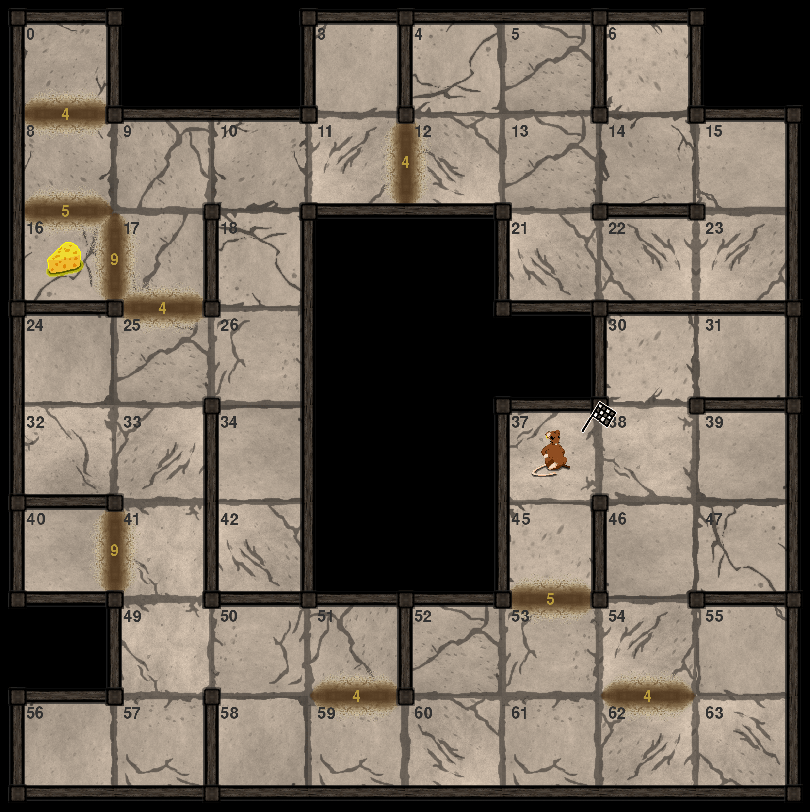
Dijkstra’s algorithm
A direct application of the BFS algorithm
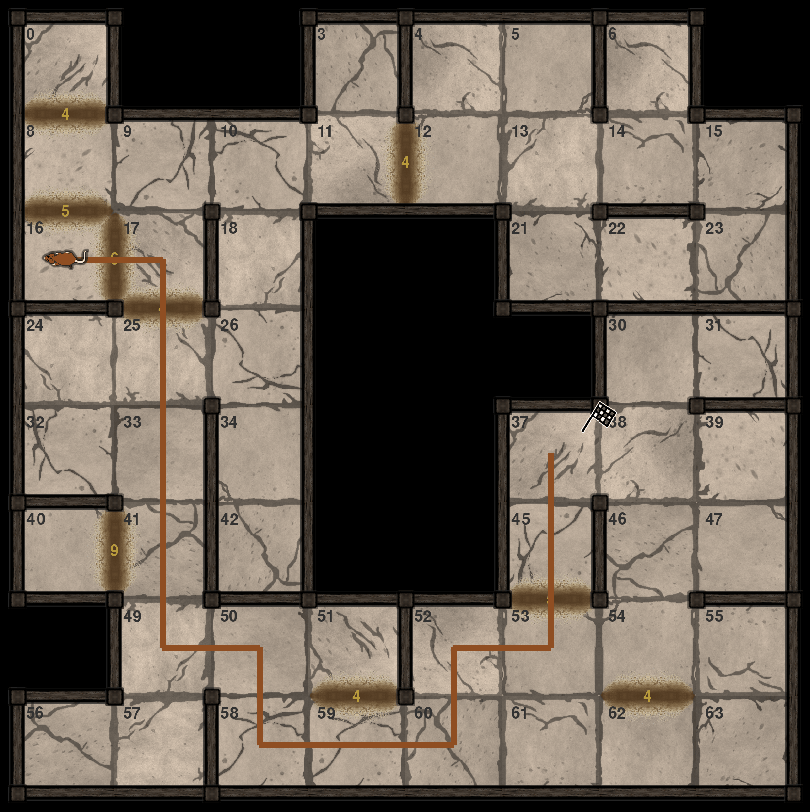
Dijkstra’s algorithm
The actual shortest path
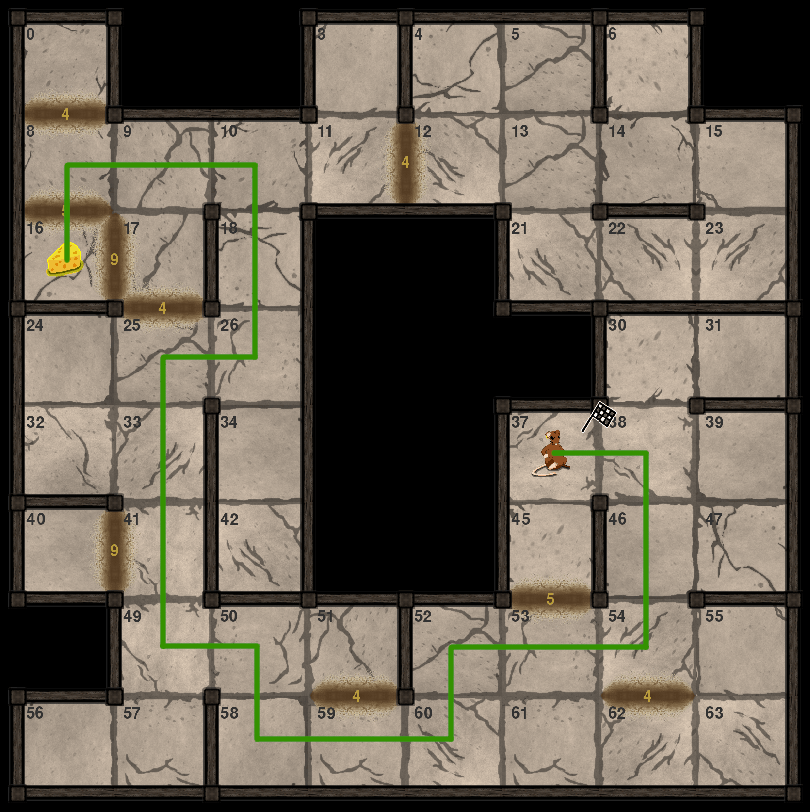
Dijkstra’s algorithm
How does it work?
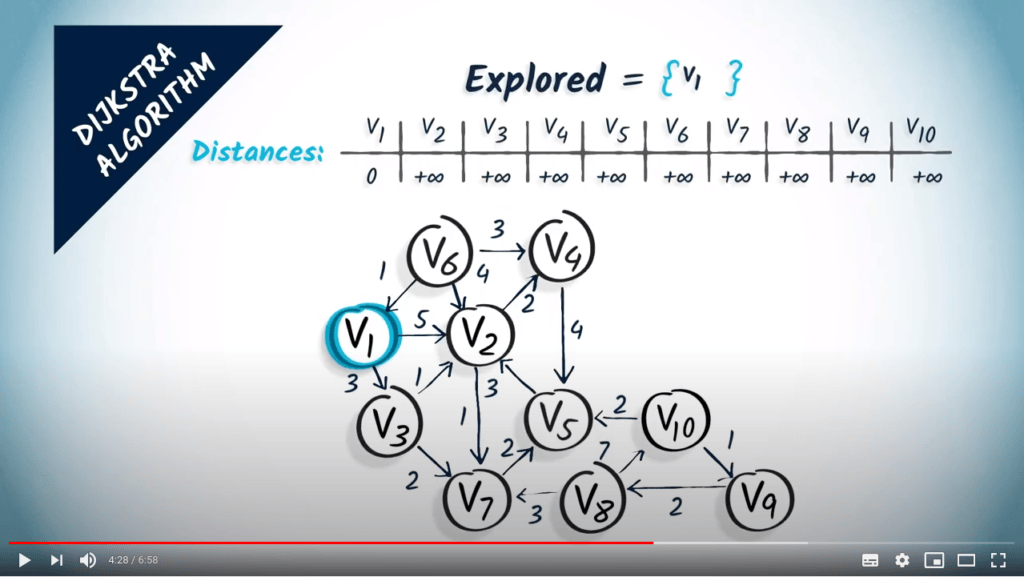
- Initialize an array of $+\infty$ distances to the initial vertex $v_1$
- Initialize a set to remember which vertices were explored
Dijkstra’s algorithm
How does it work?
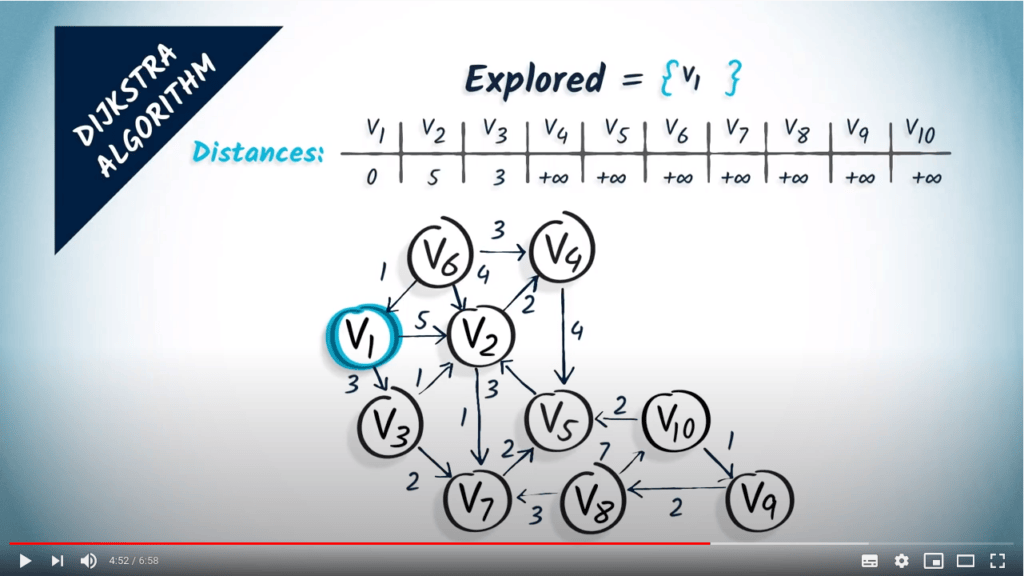
- Update the distances to accessible neighbors
- We update $v_2$ (distance of $5 < +\infty$) and $v_3$ (distance of $3 < +\infty$)
Dijkstra’s algorithm
How does it work?
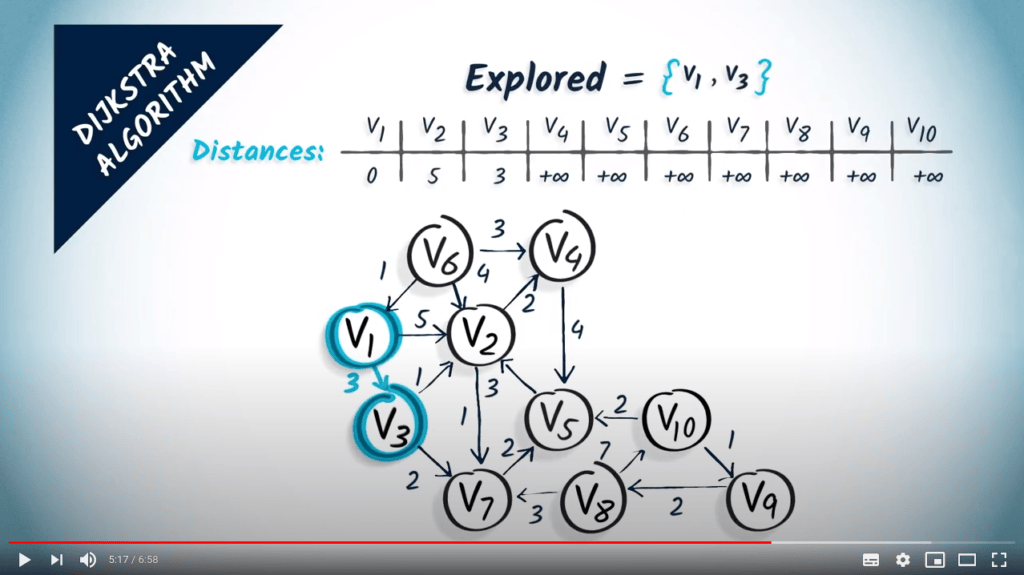
- Explore the unvisited neighbor with minimum distance to $v_1$
- We explore $v_3$
Dijkstra’s algorithm
How does it work?
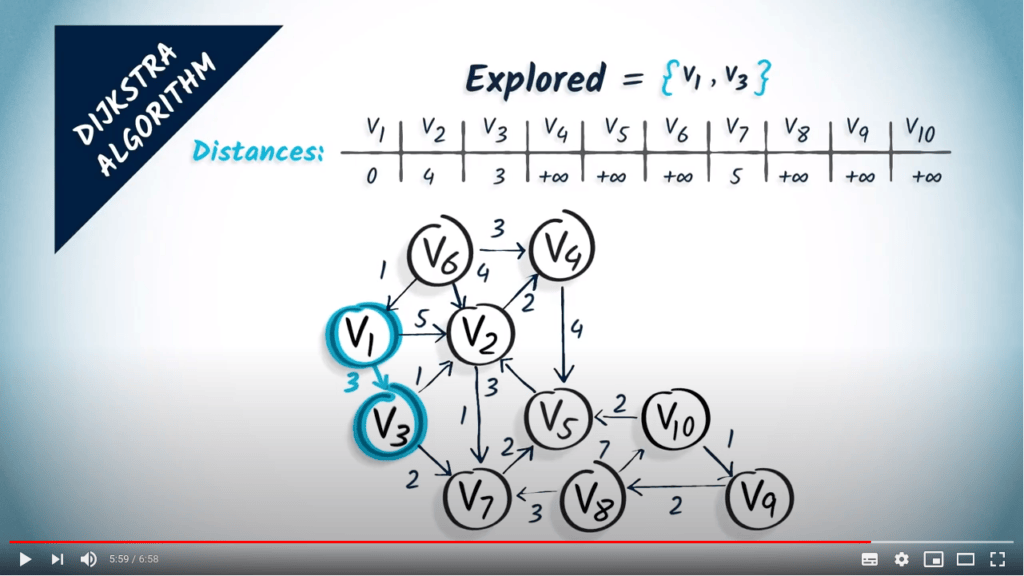
- Update the distances to accessible neighbors
- We update $v_2$ (distance of $3+1 < 5$) and $v_7$ (distance of $3+2 < +\infty$)
Dijkstra’s algorithm
How does it work?
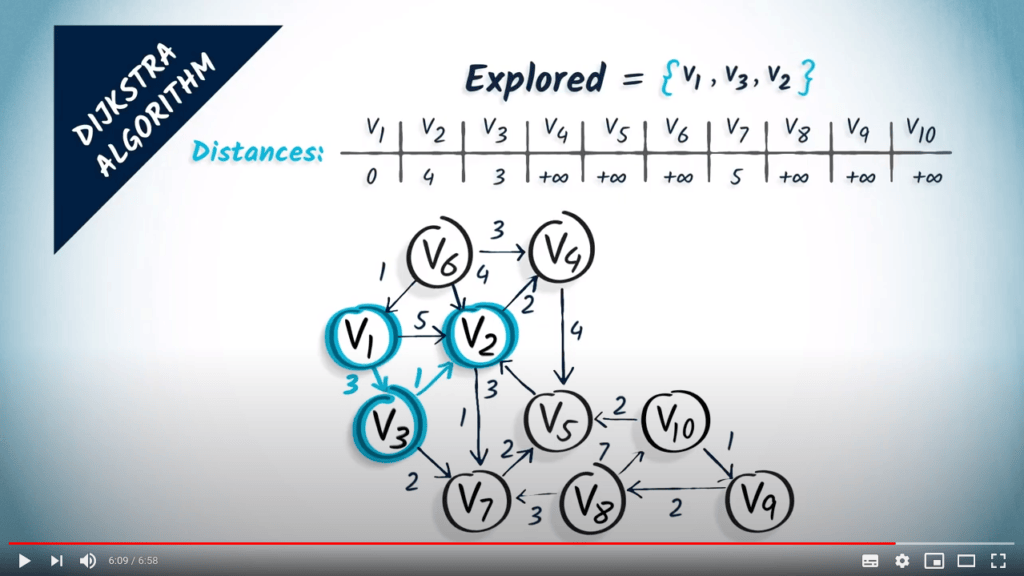
- Explore the unvisited neighbor with minimum distance to $v_1$
- We explore $v_2$
Dijkstra’s algorithm
How does it work?
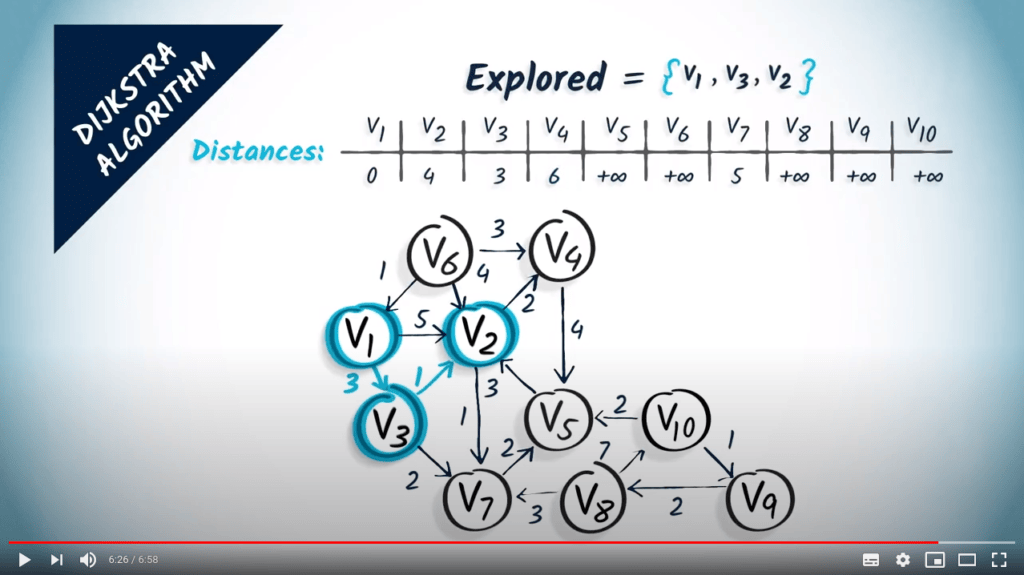
- Update the distances to accessible neighbors
- We update $v_4$ (distance of $3+1+2 < +\infty$)
Dijkstra’s algorithm
How does it work?
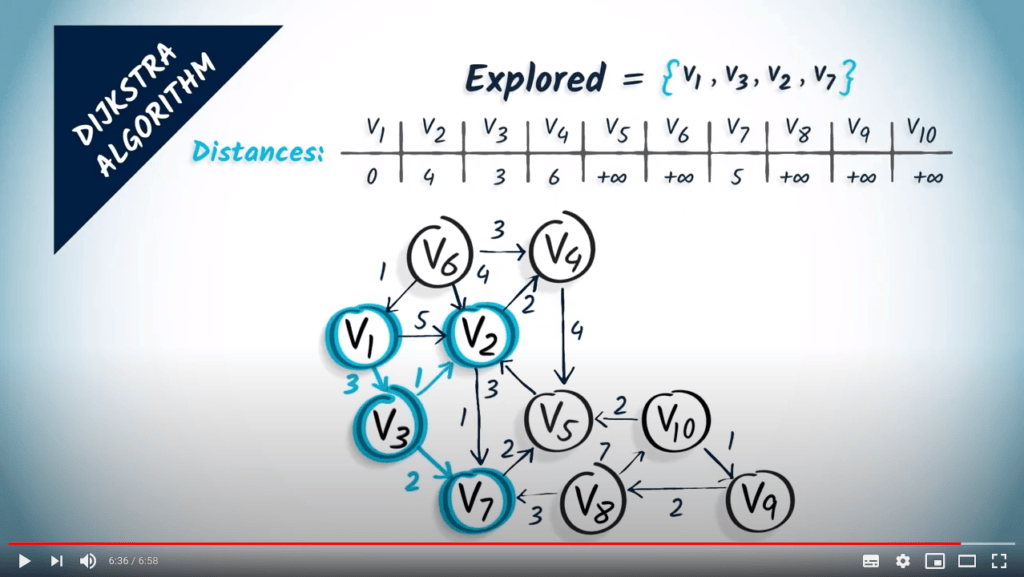
- Explore the unvisited neighbor with minimum distance to $v_1$
- We explore $v_7$, no distances to update
Dijkstra’s algorithm
How does it work?
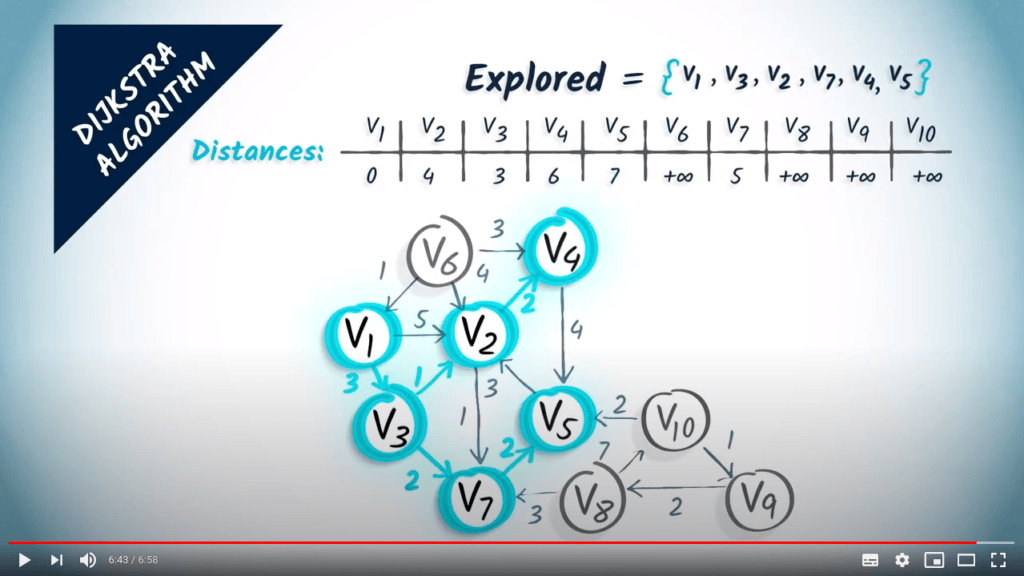
- Explore the unvisited neighbor with minimum distance to $v_1$
- We explore $v_5$, no distances to update, we are done!
Min-heaps
Using a min-heap
-
Just like FIFOs and LIFOs, min-heaps store elements
-
Two methods:
pushstores an element in the structurepopextracts the smallest element
-
“smallest” needs to be clarified
# Create a min-heap
heap = new_heap()[]# Add elements to the heap
push(heap, ("A", 50))
push(heap, ("B", 22))
push(heap, ("C", 10))[('A', 50), ('B', 22), ('C', 10)]# Extract smallest element from the heap
pop(heap)('A', 50)Min-heaps
Dijkstra’s algorithm and min-heaps

- Explore the unvisited neighbor with minimum distance to $v_1$
- Maintain a min-heap with elements (distance to $v_1$, $v_x$)
Recap of the session
Main elements to remember
-
Dijkstra’s algorithm extends BFS to weighted graph
-
Think of water flowing through the graph at a constant speed
-
We didn’t talk about routing tables but you will need one to retrieve the path
-
Min-heaps are data structure that pop the minimum element
-
Many implementations are possible, beware of details!
-
Dijkstra’s algorithm is a traversal that exploits the properties of a min-heap
-
Remember the relation between BFS/queue and DFS/stack
Recap of the session
What’s next?
Practical activity (~2h30)
Catch one cheese with mud
- Program Dijkstra’s algorithm
- Think carefully of data structures
After the session
- Review the articles of the session
- Check your understanding with the quiz
- Complete the practical activity
- Check next session’s “Before the class” section
Evaluation
- Evaluated quiz to start next session!
- Deliverable for session 3 (check session page for details)